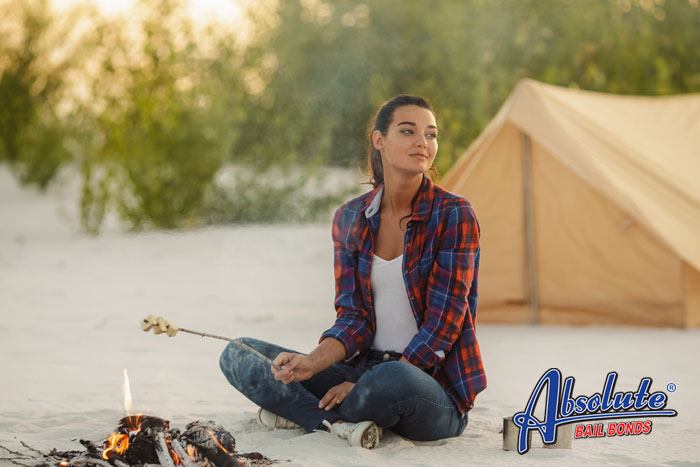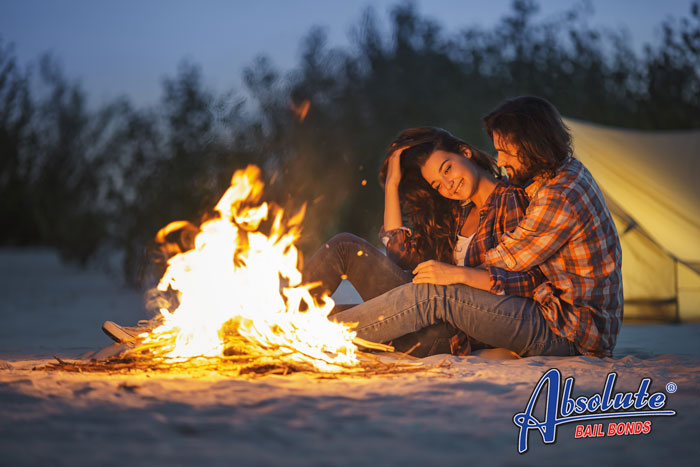
Fall Camping Safety Tips in California
The fall is a great time to go camping in California. Not only is the weather a little cooler, but the bugs aren’t as bad either. Another advantage is that since school is in session, there are usually fewer kids at the local campsites which means the campgrounds and trails are a little quieter.
There are a few things you need to keep in mind when it comes to safety and fall camping.
The first is that you have to be mindful of the weather. The biggest drawback to camping in the fall rather than the summer is that the weather changes faster and those changes can be more extreme. This is especially true if you’re going into the mountains. Not only will you want to watch the weather reports, but you’ll also want to pack some additional clothing that you can change into if the temperature suddenly drops.
Always let someone know where you are going, even if you are just going on a one-night hike/camping trip on your own. No matter how careful you are, there is a chance you’ll be hurt. Knowing when you’re supposed to be back and your last location drastically improves the chances of a quick rescue. The quicker the rescue, the better the odds of making a full recovery.
Keep your phone charged. Yes, you might crave solitude and escape, but that doesn’t mean you should leave your phone home. Before leaving make sure it’s fully charged so that you can use it if you get into trouble. While you want to keep your phone close at hand during the entire camping trip, you don’t have to keep it turned on if you don’t want to deal with texts and calls the entire time you’re camping. Feel free to turn it off and keep it in your pocket.
Be mindful of fire safety the entire time you’re camping. Fall wildfires are a serious concern in California. You don’t want to be the cause of one. Always have plenty of water on hand, create a fire ring, and keep the campfire as small as possible. Douse your fire before you leave the camp and make sure the ashes are cold and that there are no remaining embers that could start a wildfire.
Be realistic about your ability. Stick to trails that you are physically suited for and don’t push yourself too hard, especially if you’re on your own. Don’t take any chances that could end with you getting hurt or overwhelmed by exhaustion. If you’ve never gone camping before, bring an experienced camper with you so they can teach you how to camp properly.
The more mindful you are about safety, the more you’ll enjoy your fall camping adventure in California.

Tips for Staying Safe While Camping
Camping is a great way to enjoy both the fantastic summer weather and breathtaking beauty California has to offer. The great thing about camping is that it’s also affordable and usually something you can do at the spur of the moment.
The key to getting the maximum amount of enjoyment out of your camping adventure is making sure you are conscious the entire time you’re camping.
Be Knowledgeable About Basic First Aid
It doesn’t matter how careful you are, accidents do happen and anytime there’s an accident, there’s a risk of an injury. Before you embark on a camping adventure, set aside some time to acquaint yourself with basic first aid. Make sure you know how to tie a tourniquet to slow bleed, how to apply a pressure bandage, and how to manage a sprain.
While you’re learning how to treat common camping injuries, you should also learn how to identify and manage things like allergic reactions, head injuries, hypothermia, and heatstroke.
Knowing how to deal with a camping health crisis is great, but all that knowledge won’t do you any good if you don’t have the right supplies with you. Put together a first aid kit that has everything needed to deal with common camping injuries and make sure you have the kit with you at all times. Never go on a hike or boating adventure without your first aid kit.
Research the Area Where You’ll be Camping
Once you know where you’re going camping, take some time to familiarize yourself with the camping area. Know what dangers are in the area and learn the steps you can take to protect yourself. Most parks will let you know if there are plants, animals, and particular parts of the park you should avoid. If you learn that the park has bears, raccoons, and other forms of wildlife that have gotten comfortable with campers, take some time to make sure you have equipment that will protect your camping gear from these animals. You should also memorize the steps you should take if you find yourself in a face-to-face encounter with wildlife.
Pack a Dangerous Plants Book in Your Kit
You should always have a book that helps you identify dangerous plants that are native to the area where you’re camping. This book will not only help you identify which plants you shouldn’t touch but will also provide useful tips about what you should do if you accidentally brush against one. Knowing what types of dangerous plants are native to your campsite helps you determine what salves and lotions you should include in your first aid kit.
Make Sure you’re Equipment is in Good Repair
Before leaving on your camping trip, look over your equipment and make sure it’s in good repair. Having equipment that is in perfect working order not only makes your camping experience safer but also increases how much you enjoy your adventure.
Check-in With a Loved One
Always let someone know what your camping itinerary is and schedule regular check-ins. While this might seem like an inconvenience, knowing where to start searching for you if you don’t check-in can be a lifesaver if you fall and injure yourself so badly you can’t return to your campsite.
When it comes to camping safety, you can never be too cautious.

